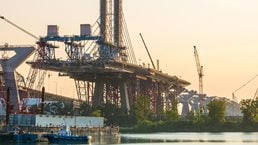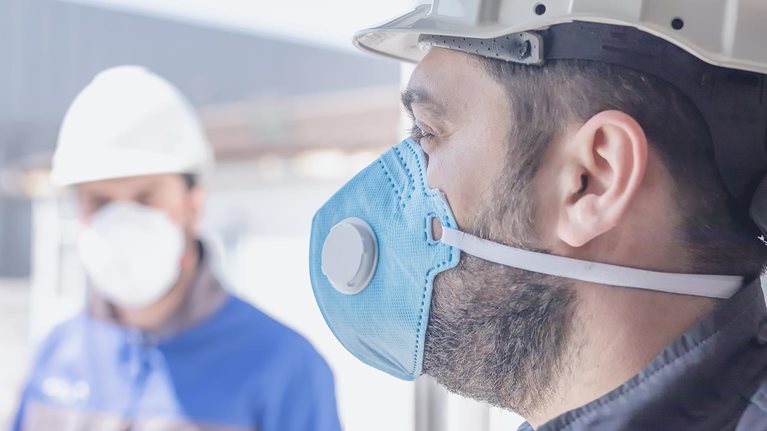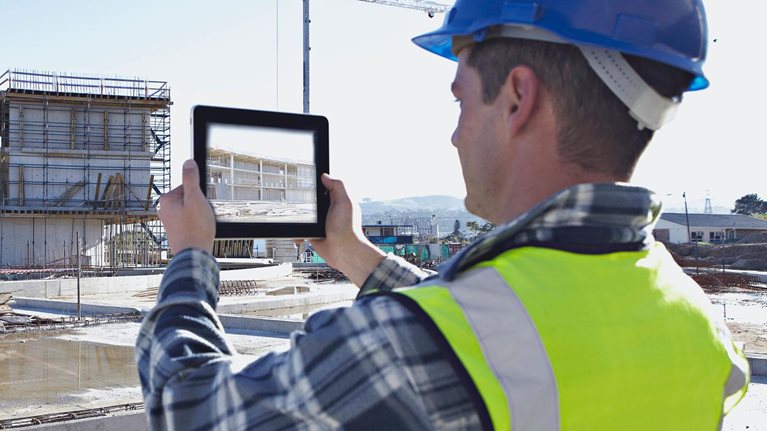Throughout the COVID-19 pandemic, engineering and construction leaders have been faced with the challenges of meeting infrastructure needs. Like all leaders, they are also rethinking how they support and engage with their employees.
In this interview, Paul Dollin, chief operating officer of engineering professional-services consultancy WSP, shares how the firm has adapted to the current working environment, and what the future might look like.
McKinsey: What steps have WSP’s global leadership team taken to address the complex challenges that are continually unfolding under COVID-19?
Paul Dollin: We have approached COVID-19 with a “plan for the worst, strive for the best” mentality, with an aim toward decisive, rapid actions to protect the safety of our people, the programs of our clients—and the longevity of our business.
Our primary and immediate challenge was continuing to meet each client’s unique needs while anticipating how those needs might change in the current environment. We began drawing on what we see as a crucial strength of our operating model, which is to empower the local leadership teams who are closest to our clients. These leaders have adapted their operating approaches to overseeing construction activities, using videoconferencing to review designs and make presentations. We’ve also enhanced our efforts to identify, process, and communicate important information to clients.
What we have found is that client interaction is not only possible in the context of a lockdown but often more extensive, more relaxed, and more frequent. In many instances, our clients are willing to chat on a video call for more time than they were willing to spend in a meeting at their offices. We are also emphasizing global collaboration to refine our thinking. Webinars, which are open to all employees and the general public, have allowed us to share timely information, analyses, and best practices from our thought leaders.
McKinsey: What sorts of results have you seen from these efforts?
Paul Dollin: To date, the results are encouraging. In April, business performance and related key metrics were strong despite some effect on revenues from COVID-19. Of course, we do recognize there must be a transition from the current shorter-term response period to one of longer-term vision. This strategic shift requires us to consider how to extend these positive outcomes into lasting practices for our clients and employees.
We are paying particular attention to our employees’ mental health and well-being as they work from home. Our efforts include awareness training to help managers recognize situations that might require further attention and a mental-health self-assessment for employees as they work from home. Employees can also participate in numerous company-sponsored counseling sessions, both for themselves and their families. Over the longer term, we plan to continue supporting our people with ongoing virtual support groups, educational webinars, and mindfulness sessions, all designed to help people feel connected to each other even when they aren’t physically in the same space.
Local offices supplement these activities by hosting virtual game nights, contests, and social gatherings. As part of our regular communications with employees, we highlight all of these offerings—our central concern continues to be how employees are adjusting to the stress and strains of isolation.
McKinsey: How has WSP adapted to a remote-working model in the context of projects and clients that are located around the world?
Paul Dollin: One the critical roles WSP plays is in leading a wide range of planning-stage projects, where stakeholder and public participation is vital to determining the best outcome for the community. Traditionally, this engagement has been accomplished through face-to-face public workshops and meetings. But we have demonstrated to clients in Australia, Canada, New Zealand, Sweden, the United Kingdom, and the United States that virtual yet interactive workshops can bring together diverse groups to advance the planning process. These workshops have also been helpful in defining the parameters of projects that should move forward to design and construction. We have also advanced essential construction projects by utilizing video-capture technology to inspect sites and remote-sensing techniques instead of on-the-ground surveys.
And throughout the crisis, we have found that maintaining and increasing client engagement has been key to confidence building and effective decision making. An integral part of this effort is keeping everyone abreast of COVID-19 latest developments through calls and virtual meetings.

Restarting after COVID-19: A Q&A with Clifford Chance’s David Metzger
McKinsey: What lessons learned from the 2008 global financial crisis can be applied today to meet society’s infrastructure needs in the recovery phase?
Paul Dollin: We think one of the important lessons from that time is the role that infrastructure investment can play in boosting economic development. Dollars invested in critical transportation infrastructure, for example, could provide an essential economic stimulus.1
However, in 2009, the focus in the United States was on “shovel ready” projects rather than planning-stage projects. The result, in our experience, was a gap in permitted projects in the construction pipeline 18 to 24 months later.2 This experience suggests that earmarking funds for planning-stage projects could help support construction activity on a more sustained basis. Consequently, we are currently working on proposals in several countries to encourage funding for planning-stage projects.
McKinsey: Emerging from COVID-19, what steps can we take to make the industry more sustainable and collaborative, and to future-proof infrastructure assets?
Paul Dollin: As an industry, we should view the planning, design, construction, and maintenance of infrastructure through a wider lens, considering the universal impacts of our decisions. Deep and continuous collaboration—among the public sector, the private sector, academia, and professional associations—will inform and shape the best decisions.
The crisis has revealed how agile we can be and where we can perform even better. Digital tools have enabled us to apply our advisory and multidisciplinary technical capabilities in new ways to foster interaction and coalesce diverse ideas from around the world to benefit projects in progress as well as those envisioned. As we consider the longer-term implications of working remotely and virtually for the foreseeable future, it is clear that we must continuously adapt. We will closely monitor conditions for our people, projects, and clients while maintaining established practices that continue to produce positive outcomes.


